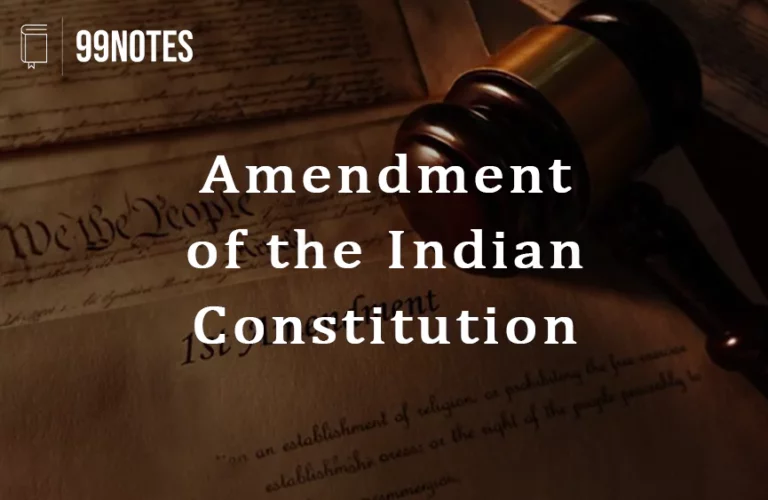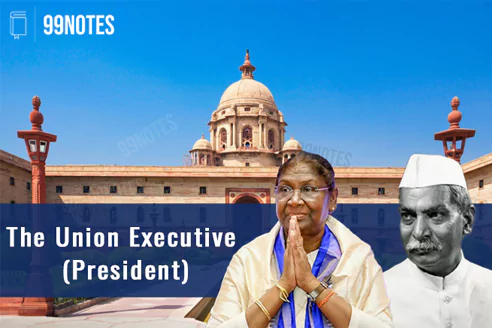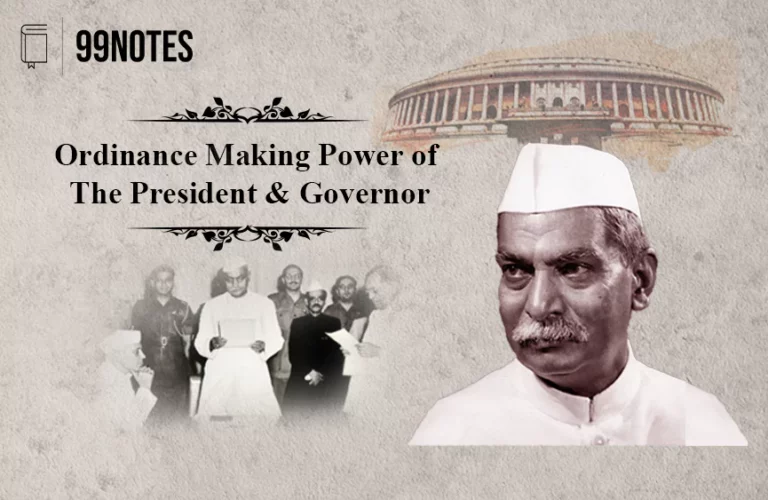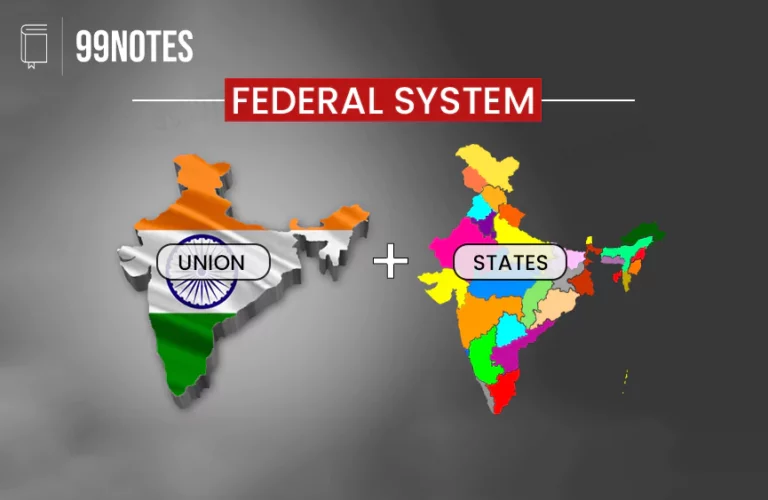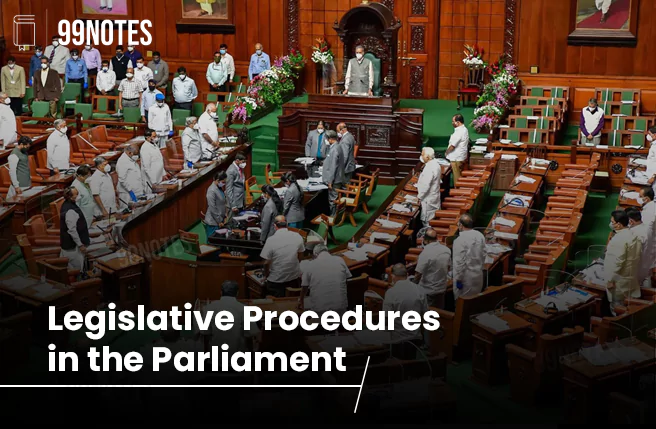Salient Features of Indian Constitution [UPSC Notes]
Salient Features of Indian Constitution
The Constitution of India is a foundational document that governs India. It is not only the highest law in the country but also a symbol of India’s values and governance. Adopted in 1950, it shapes India’s political landscape and ensures rights and freedoms for all its citizens. This article will explore the most important characteristics, or salient features of Indian Constitution.
- The Indian Constitution is considered unique in its contents and spirit worldwide.
- It has the distinction of being most lengthy and detailed due to the vastness of the country and the unique socio-economic and political issues that it faces.
- The constitution reflects the legacy of the freedom struggle. Its emphasis on diversity, secularism, opposition to all sorts of discrimination, provision of equal opportunity for self-development, and many other related concerns epitomizes the values that came to the forefront during our freedom struggle against colonial rule.
List of the major Salient Features of Indian Constitution are as follows:
- Lengthiest Written Constitution
- Drawn from Various Sources
- Blend of Rigidity and Flexibility
- Federal System with Unitary Bias
- Parliamentary Form of Government
- Synthesis of Parliamentary Sovereignty and Judicial Supremacy
- Integrated and Independent Judiciary
- Fundamental Rights
- Directive Principles of State Policy (DPSPs)
- Fundamental Duties
- Secular State
- Universal Adult Franchise
- Single Citizenship
- Independent Bodies
- Emergency Provisions
- Three-tier Government
- Cooperative Societies
![Salient Features Of Indian Constitution [Upsc Notes] | Updated December 18, 2024 Major Salient Features Of Indian Constitution- 99Notes](https://99notes.in/wp-content/uploads/2023/07/constitution-of-india-99notes-ias-.png)
Detail Analysis of Salient features of Indian Constitution
This section delves into the salient features of Indian Constitution, highlighting the unique elements that define India’s governance and uphold its democratic principles. Let’s start with:
1. Lengthiest Written Constitution:
- The constitutions are mainly classified into two types: written (American Constitution) and unwritten (British Constitution).
- The Indian Constitution holds the title of being the world’s longest and most comprehensive Constitution to date.
The factors contributing to this phenomenon are geographical factors (the country’s vastness and diversity), Historical factors (Influence of GOI, 1935), a Single constitution for both center and state and dominance of legal luminaries in the constituent assembly.
2. Drawn from Various Sources:
- Dr B.R. Ambedkar said that the Constitution of India had been framed after ‘ransacking all the known Constitutions of the World’.
-
- The structural part of the Constitution is mostly derived from the Government of India Act of 1935. Provisions like The Federal Scheme, Judiciary, Governors, Emergency Powers, Public Service Commissions and most administrative details are drawn from this Act.
- The philosophical part of the Constitution, like the Fundamental Rights (F.R.s) and the Directive Principles of State Policy (DPSPs), derives encouragement from the American and Irish Constitutions, respectively.
- The political part of the Constitution (Cabinet Government, the relations between the executive and the legislature) has been drawn mainly from the British Constitution.
3. A blend of Rigidity and Flexibility:
There are two types of Constitutions in the world, viz. rigid and flexible. The Constitution of India is neither flexible nor rigid but the adhesion of both.
- A rigid Constitution requires a particular procedure for its amendment, such as the American Constitution. The Constitution of India is neither rigid nor flexible but a synthesis of both.
- On the other hand, a flexible constitution can be amended in the same manner as ordinary laws are made, such as the British Constitution.
- Types of amendments: article 368 provides for mainly two types of amendments:
-
- Amendments by special majority: Some provisions can be amended by a Parliament’s special majority. (i.e., a two-thirds majority of the members of each House present and voting and a majority of the total membership of each House).
- Amendments by a special majority and with the ratification by half of the total states: Some other provisions need the ratification by half of the total states, apart from the special majority.
- Amended by a simple majority: Some provisions can be amended by a simple majority, i.e. in the manner of the ordinary legislative process. Considerably, these amendments do not come under Article 368.
4. Federal System with Unitary Bias:
A federation is a system of government where the local units have their own government, independent of the central government. Such a federation can be shaped in two ways:
- Coming together Federations:
-
- ‘Coming together’ federation is nothing but independent states coming together on their own to form a bigger state or country. It is achieved by ‘way of integration’.
- Generally, several independent states come together for their socioeconomic interest to form a big and strong union.
- It is an ‘Indestructible union of indestructible states’.
- Examples – The United States, Switzerland and Australia etc. The US is the first and the oldest federation in the world.
- Holding together Federations:
-
- Holding together a federation is nothing but the division of powers between the country’s states and the country’s central government.
- It is achieved by ‘way of disintegration’.
- It is an ‘Indestructible union of Destructible states’.
- We can say that an extensive unitary state can be converted into a federation by granting autonomy to the provinces to promote regional interests and boost national integrity.
- Examples –India, Canada, Belgium and Spain etc.
India as a whole was declared independent, but it chose to give its federal units the powers necessary to ensure local governance. Thus, India is a Holding together federation.
It contains most of the general features of a federation, some of which are:
- Dual Governments,
- Division of powers,
- Written Constitution,
- Supremacy of the Constitution,
- The rigidity of the Constitution,
- Independent Judiciary,
- Bicameralism.
However, the Indian Constitution also comprises a variety of unitary features, some of which are:
- A strong Centre,
- Single Constitution,
- Single citizenship,
- The flexibility of the Constitution,
- Integrated Judiciary,
- Appointment of state governor by the Centre,
- All-India services,
- Emergency provisions, and so on.
But, the term ‘Federation’ has nowhere been used in the Constitution.
On the other hand, Article 1 narrates India as a ‘Union of States, which signifies two things:
- Indian Federation is not the outcome of an agreement by the states;
- No Indian state has the right to secede from the federation.
Hence, the Indian Constitution has been described as ‘federal in form but unitary in spirit’.
5. Parliamentary Form of Government:
- The Constitution makers of India preferred the British Parliamentary System over the American Presidential System.
- The parliamentary system (‘Westminster’ Model) is based on cooperation between the legislative and executive organs. In comparison, the presidential form of government is based on the Principle of separation of powers between the two prominent organs.
- In a parliamentary system, whether in Britain or India, the role of the Prime Minister has become so significant and crucial that political scientists call it a ‘Prime Ministerial Government’.
Features of parliamentary government in India:
- Presence of real and nominal executives; The President is the Nominal head, and the Prime minister is the de-facto head.
- Majority party rule – as the government is chosen by the Legislature, unlike in U.S.A., where the President is separately chosen.
- Collective responsibility of the executive to the legislature,
- The leadership of the Prime Minister/Chief Minister,
- Membership of the ministers in the legislature,
- Dissolution of the lower Houses (Lok Sabha or Assembly).
Even though the Indian parliamentary system is primarily based on the British pattern, the two have some fundamental differences.
- The Indian Parliament is not a sovereign body like the British Parliament.
- The Indian State has an elected head (republic/president), while the British have a hereditary head (monarchy).
6. Synthesis of Parliamentary Sovereignty and Judicial Supremacy:
- Britain follows the doctrine of Parliamentary sovereignty wherein any law made by the Parliament is final. Parliament is the source of all power, and therefore, the ‘Procedure established by the law’ is final.
- On the other hand, in the U.S.A., the view of the American Supreme Court is final on any matter. This is known as the principle of judicial supremacy. American Constitution follows the principle of ‘due process of law’. It means that in order for a law to be valid, it has to follow the right process, i.e. the principles of Natural Justice.
- India retains some elements from both doctrines. The Indian Constitution mentions the ‘procedure established by law’ (Article 21), which means that its Parliament should have been a sovereign like the British Parliament. However, in India, the Judiciary has the power to review laws and constitutional amendments passed by the Parliament on the basis of its fairness. Although, in India, the power of judicial review of the Supreme Court is narrower than in the U.S.A.
- The Supreme Court, on the one hand, can declare parliamentary laws unconstitutional through its authority of judicial review. On the other hand, the Parliament can amend the major portion of the Constitution without affecting its basic structure.
7. Integrated and Independent Judiciary:
- A single, integrated judicial system exists in India.
- The Supreme Court of India is the highest court of appeal, the guarantor of fundamental rights and the guardian of the Indian Constitution.
- The Constitution of India has made various provisions to ensure Judiciary’s independence–
-
- Tenure of the judges in India is fixed,
- Fixed service conditions for the judges,
- All the expenses of the Supreme Court charged upon the Consolidated Fund of India,
- Prohibition on the discussion on the conduct of judges in the legislatures,
- Ban on practice after retirement,
- Power to punish for its contempt,
- Separation of the Judiciary from the executive etc.
8. Fundamental Rights:
The Fundamental Rights of the Indian Constitution promoted the idea of political democracy.
- Part III of the Indian Constitution guarantees six fundamental rights to all citizens:
- Right to Equality (Articles 14–18);
- Right to Freedom (Articles 19–22);
- Right against Exploitation (Articles 23–24);
- Right to Freedom of Religion (Articles 25–28);
- Cultural and Educational Rights (Articles 29–30); and
- Right to Constitutional Remedies (Article 32).
- Nature of Fundamental Rights:
-
- They operate as limitations on the executive’s tyranny and the legislature’s arbitrary laws.
- They are justiciable, as they are enforceable by the courts for their violation.
- Not absolute and subject to reasonable restrictions.
- Not sacrosanct and can be curtailed by the Parliament through a Constitutional Amendment Act.
- They can also be suspended during the National Emergency (except Articles 20 and 21).
9. Directive Principles of State Policy (DPSPs):
- According to R. Ambedkar, the Directive Principles of State Policy (Part IV) is a ‘novel feature’ of the Indian Constitution.
- It seeks to establish a ‘welfare state’ in India and promotes the idea of social and economic
- They can be classified into three broad categories–Gandhian, Socialistic and Liberal-intellectual.
- The DPSPs are non-justiciable in nature, unlike the Fundamental Rights.
- In the Minerva Mills case, the Supreme Court held that ‘the Indian Constitution is founded on the bedrock of the balance between the Fundamental Rights and the Directive Principles.’
10. Fundamental Duties:
- Considering the recommendation of the Swaran Singh Committee, the Fundamental Duties were added to the Constitution by the 42nd Constitutional Amendment Act of 1976.
- Article 51-A of Part IV-A specifies the eleven Fundamental Duties.
- One more fundamental duty was added with the 86th Constitutional Amendment Act of 2002.
- However, like the DPSPs, the Fundamental duties are also non-justiciable.
11. A Secular State:
- The term secular was added through the 42 nd constitutional amendment act of 1976.
- The Constitution of India authorises a secular government, as it does not support any specific religion as the state’s official religion in India.
- The Indian Constitution exemplifies secularism, which is treating all religions equally or providing equal protection.
- The Western concept of secularism implies a complete separation between religion and the state. This type of watertight separation is not feasible in the Indian context, where the society is pluri-religious. Therefore, the Indian Constitution embodies positive secularism, i.e. treating all religions equally.
12. Universal Adult Franchise:
The constitution makers took a bold decision by introducing a universal adult franchise. This is highly appreciable because of the vast size of the country, its high poverty, huge population, social inequality, and overwhelming illiteracy. An illiterate population cannot read the name of the candidate on the ballot paper. Therefore, electoral symbols had to be introduced.
- Every citizen who is not less than 18 years of age has a right to vote.
-
- Article 326 provides universal adult suffrage.
- In 1989, the voting age was reduced to 18 years from 21 years by the 61st Constitutional Amendment Act.
13. Single Citizenship:
- Though the Indian Constitution is federal and confronts a dual polity, it provides only one citizenship, i.e., Indian citizenship.
- In the U.S.A., each person is not only a citizen of the U.S.A. but also a citizen of the particular state to which he belongs.
14. Independent Bodies:
The Indian Constitution provides for the legislative, executive and judicial organs of the government and establishes certain independent bodies. These are:
- Election Commission: The commission ensures free and fair elections to the Parliament and state legislatures, the office of the President of India and the office of the Vice-president of India.
- Comptroller and Auditor-General of India (C.A.G.): The office of C.A.G. audits the accounts of the Central and state governments. He acts as the guardian of the public purse.
- UPSC and State PSC: The UPSC conducts examinations for recruitment to all-India services and higher Central services and advises the president on disciplinary matters.
On the other hand, SPSCs were formed in every state to conduct examinations for recruitment to the state services and to advise the governor on disciplinary matters.
15. Emergency Provisions:
- The rationality behind incorporating emergency provisions is to safeguard the unity, sovereignty, integrity and security of the country, the democratic political system, and the Constitution.
- The Emergency Provisions are included in Part VIII of the Indian Constitution.
- The Indian Constitution envisages three types of emergencies, namely:
![Salient Features Of Indian Constitution [Upsc Notes] | Updated December 18, 2024 Different Types Of Emergencies](https://99notes.in/wp-content/uploads/2023/07/ground-for-diffrent-types-of-emergencies-99notes-upsc.png)
16. Three-tier Government:
- Originally, the Indian Constitution provided only for a dual polity and contained provisions about the organisation and powers of the centre and the states.
- Later with the enactment of the 73rd and 74th Constitutional Amendment Acts of 1992, a third tier of government (i.e., local) have added.
- By adding a new Part IX and a new Schedule XI to the Constitution, the 73rd Amendment Act of 1992 gave the panchayats constitutional status. Similarly, the 74th Amendment Act 1992 gave constitutional status to the municipalities by adding a new Part IX and a new Schedule 12 to the Constitution.
17. Cooperative Societies:
- The 97th Constitutional Amendment Act of 2011 gave constitutional status to cooperative societies.
- This amendment made three changes to the Constitution:
- It made the right to form cooperative societies a fundamental right under Article 19.
- It included a new DPSP on promoting cooperative societies under Article 43-B.
- Part IX-B was added in the Constitution, entitled “The Cooperative Societies” under Articles 243-ZH to 243-ZT.
- It empowers the Parliament regarding multi-state cooperative societies and the state legislatures regarding other cooperative societies to make the appropriate law.
- However, in 2021, the apex Court struck down several provisions of the act which prescribed the rules under which the state governments could regulate societies, since the power to regulate the cooperative societies come under the entry 32 of the state list and states had not ratified the constitution amendment bill.
- Dr B.R. Ambedkar said that the Constitution of India had been framed after ‘ransacking all the known Constitutions of the World’.
- The structural part of the Constitution is mostly derived from the Government of India Act of 1935. Provisions like The Federal Scheme, Judiciary, Governors, Emergency Powers, Public Service Commissions and most administrative details are drawn from this Act.
- The philosophical part of the Constitution, like the Fundamental Rights (F.R.s) and the Directive Principles of State Policy (DPSPs), derives encouragement from the American and Irish Constitutions, respectively.
- The political part of the Constitution (Cabinet Government, the relations between the executive and the legislature) has been drawn mainly from the British Constitution.
Conclusion
The Salient features of Indian Constitution are the foundation of India’s government and democratic values. The Indian Constitution is a comprehensive document that balances the intricate socio-political dynamics of India with its rich cultural diversity. It is distinctive for its length, the blend of rigidity and flexibility, and the synthesis of various global ideologies tailored to India’s unique context. Understanding these silent features of Indian constitution help appreciate how deeply the constitution influences daily life and governance in India, securing the welfare and rights of every citizen.

![Salient Features Of Indian Constitution [Upsc Notes] | Updated December 18, 2024 Everything You Need To Know About Salient Features Of Indian Constitution](https://99notes.in/wp-content/uploads/2023/08/salient-features-of-indian-constitution-banner-99notes-upsc-654cce9bf3d76.webp)
![Salient Features Of Indian Constitution [Upsc Notes] | Updated December 18, 2024 Everything You Need To Know About Salient Features Of Indian Constitution](https://99notes.in/wp-content/uploads/2022/10/image-33-6638a7526e535-1024x240.webp)
![Salient Features Of Indian Constitution [Upsc Notes] | Updated December 18, 2024 Everything You Need To Know About Salient Features Of Indian Constitution](https://99notes.in/wp-content/uploads/2022/10/be-1-of-these-ad-66349f9d113b4-1024x341.webp)
![Salient Features Of Indian Constitution [Upsc Notes] | Updated December 18, 2024 Indian Judiciary Structure Pyramid](https://99notes.in/wp-content/uploads/2023/07/Indian-courts-99notes-upsc.png)
